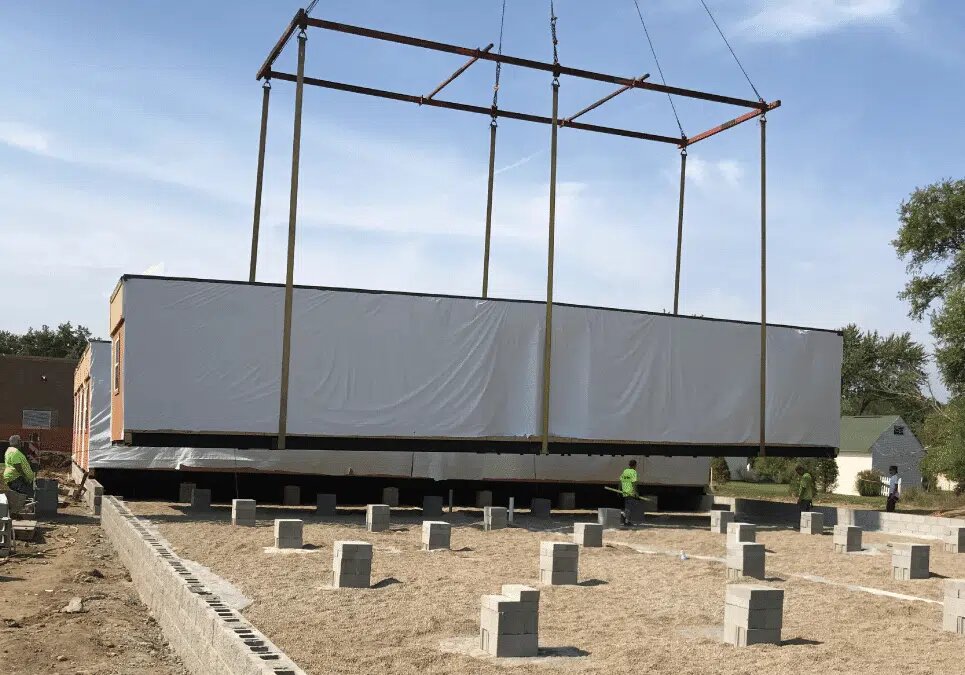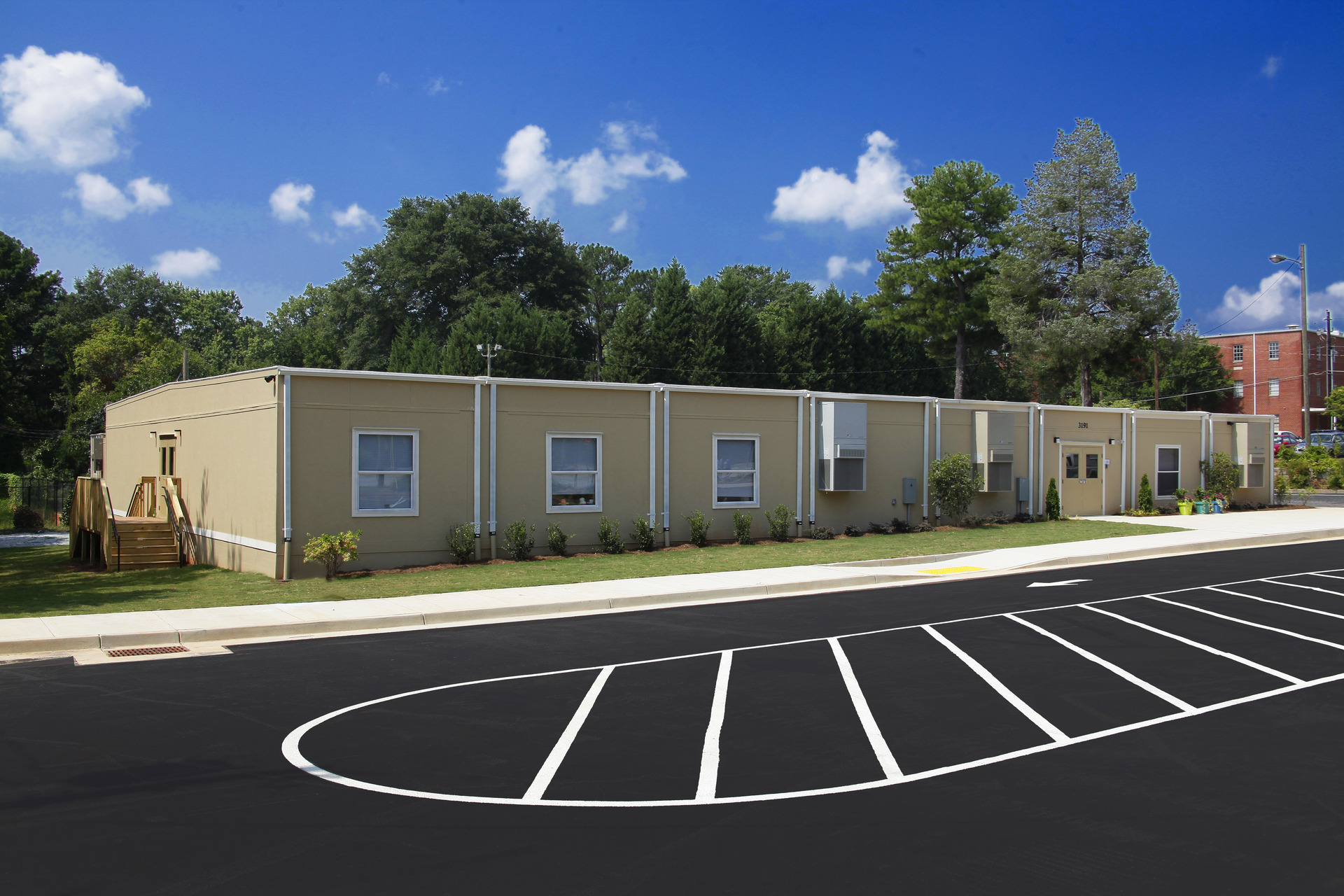5 Modular Classroom Myths: Debunked
Faced with limited budgets, overcrowding and COVID-19 restrictions, schools across the country have had it rough for a while now. One of the most pressing problems schools face today is finding enough classroom space to educate their students safely.
There are plenty of so-called solutions, but they don’t seem to actually solve the problem. Remote learning has been problematic at best, rotating schedules present enormous logistical challenges, and some students are getting lost in the shuffle.
A lot of schools, however, are finding success by attacking the problem in the simplest way possible: need more classroom space? Add more classrooms.
That’s an oversimplification, of course. These schools don’t have new buildings to house more classrooms or time to design and build from scratch. Instead, they have added modular classrooms.
Unfortunately it’s often the case that, when districts start talking about going the modular route, some common modular classroom myths pop up and slow down progress. Below, we’re covering five of those myths and why you should stop believing them.
Want to learn more about modular classrooms and the options available to you? Check out our project portfolio of modular school buildings or contact the experts at Mobile Modular to get more information directly.
Myth 1. There Are Problems With Portable Classroom Safety
Everyone remembers fire drills and other safety exercises from their school days. These measures are more than just a reason to get out of class for 10 minutes. They’re an essential way to ensure that children and school employees are safe in the event of a fire or other emergency.
This is modular classroom myth No. 1: modular classrooms are somehow less safe than the classrooms in the main school building. The fact? That simply isn’t true. Most if not all of the same security measures can be implemented in a modular classroom.
Sprinkler Systems
Modular buildings are fully functional buildings that can come with almost any security feature you can imagine. Sprinkler systems, for example, can come pre-built into your modular classroom units. Just as modular buildings can connect to plumbing, internet and electrical lines, they can contribute to the water input necessary to operate a sprinkler system.
These systems operate just like sprinkler systems in traditional buildings. Through a manually triggered alarm, temperature or smoke sensor, the sprinkler system kicks on and douses a fire quickly and effectively.
Alarm Systems
All you need for almost any kind of school alarm system is electricity. Anyone who says modular classrooms aren’t compatible with alarm systems is unaware that modular buildings not only connect to and use electricity with ease, but also save on energy costs. Better yet, these energy savings can top 20% compared to traditional buildings.
Myth 2. Modular Classrooms Are Just Trailers
Not all schools are easy on the eyes, but many are treasured architectural gems and eye-catching buildings that define communities. Whether a school is a looker or a gray box, you often hear school officials and community members raise concerns about the potential impact modular classrooms can have on the look of the campus.
The myth that modular classrooms are just trailers isn’t just misleading — it’s categorically wrong. Modular classrooms are not trailers. They’re stackable, connectable, customizable buildings that can look any way you want them to.
Modular classrooms are also constructed to the same IBC standards as traditional site built, but are actually more efficient due to being in a controlled environment both in terms of quality and oversight.
Modular Classrooms Can Blend In With Existing Buildings
We’ve all seen those tan and white 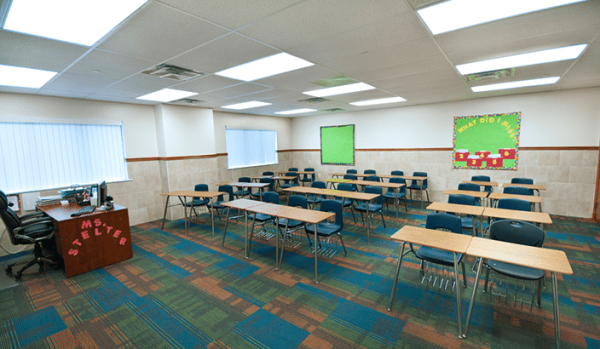 trailers sitting behind schools. There’s nothing you could do to make those blend in with a traditional school building. That’s exactly what modular classrooms are not.
trailers sitting behind schools. There’s nothing you could do to make those blend in with a traditional school building. That’s exactly what modular classrooms are not.
Modular classrooms are built in factories. They can come off the shelf, but you can also get them made to order. In the ordering process, you can specify the look and feel of the units. If you want a certain color, material or finish to match the rest of the school, it can be done.
Learn more about the ins and outs of modular classrooms and all they offer in our complete guide to modular classrooms.
Modular Classrooms Are Fully Customizable
Modular classrooms are customizable inside and out. Furnishings, interior wall materials, paint colors, windows and more can match whatever you have going on inside the main school buildings. That way, students feel that they’re in their school whether they’re in the gym, library or modular classroom space.
Myth 3. Anyone Can Walk Into A Modular Classroom
With an increase in school safety threats, the security of school buildings has clawed its way to the front of the minds of students, parents, teachers and administrators. That’s more than understandable.
What isn’t understandable is the persistent modular classroom myth that suggests modular classrooms are not secure. They are just as secure as traditional classrooms — in some cases, even more so.
Closed Environments
Teaching in a modular classroom is not like addressing a crowd in the open-air arena. Modular classrooms are closed environments, complete with locking doors and windows. People can’t just walk in whenever they want.
Modular Classroom Access Control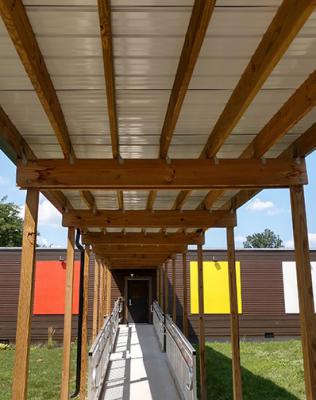
You can take portable classroom safety a step further with all the same access-control measures you would use on a traditional building. Modular classrooms are simple to equip with card readers, key fobs and similar security implements. As mentioned above, these buildings can be completely customized to your specific needs.
Modulars can also be attached to an existing building to become part of the building or connected through covered walkways. Show image of modulars connected by covered decks or ramps.
Myth 4. Modular Classrooms Use Too Much Energy
This modular classroom myth is simple. They don’t. Yes, this myth comes from a good place — schools are concerned with energy use because they want to lower costs and help the environment — but it just simply isn’t true.
In fact, in most cases, the opposite is true. Modular classrooms are highly energy efficient.
Low-voltage Systems
Modular units are highly adaptable to all kinds of wiring and inputs. That means they are fully capable of accommodating cutting-edge, low-voltage electrical systems. These systems use lower-than-standard wiring to power low-energy items like fans, alarms and LED lights.
Exterior of permanent modular preschool building for Leaps ‘n Bounds
Other Energy Efficiency Measures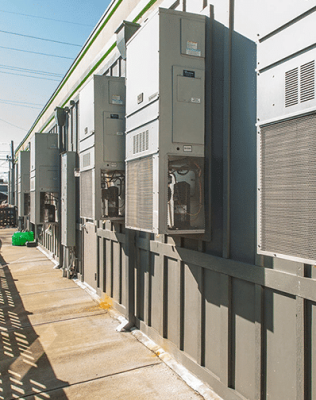
With triple-paned windows, efficient HVAC systems and high-powered insulation, modular classrooms offer a lot in the way of energy efficiency. There’s also something to be said for the smaller, enclosed units — these are much easier to heat and cool than large hallways and open-air school floor plans.
Myth 5. Modular Classrooms Promote Poor Air Quality
Some highly publicized issues with air quality in older modular classrooms have led many to perpetuate modular classroom myths about poor air quality. Many of these air quality issues were linked to teachers turning off ventilation systems to reduce noise, according to a report from the California Environmental Protection Agency.
As modular classrooms have evolved, they have come with more features that not only address reported air quality issues, but also improve air quality overall.
Reduced Off-gassing
Because modular classrooms are built in a factory setting rather than on-site, they have more time for off-gassing before students actually use them. Off-gassing is the process through which volatile organic compounds (VOCs) from sealants, adhesives and other compounds used in construction are released. More time for off-gassing in the factory means less exposure to VOCs in the classroom.
More Moisture Resistance
Factory production lends yet another air quality benefit to modular classrooms. Because modular factory settings are controlled and fully indoors, modular classrooms are much less likely than traditional classrooms to have moisture trapped inside them during the various phases of the construction process. That means mold is less likely to form and start reducing the classroom air quality.
Stop Believing Modular Classroom Myths And Start Believing In Modular.
Modular classroom myths only serve to stand in the way of progress. For many overcrowded and expanding schools, modular classrooms come with all of the problem-solving benefits of modular buildings and none of the drawbacks proposed by these myths.
Interested in modular classroom space for your school? The team at Mobile Modular has pioneered countless solutions for schools across the country. To learn more, give us a call or contact us online today.


